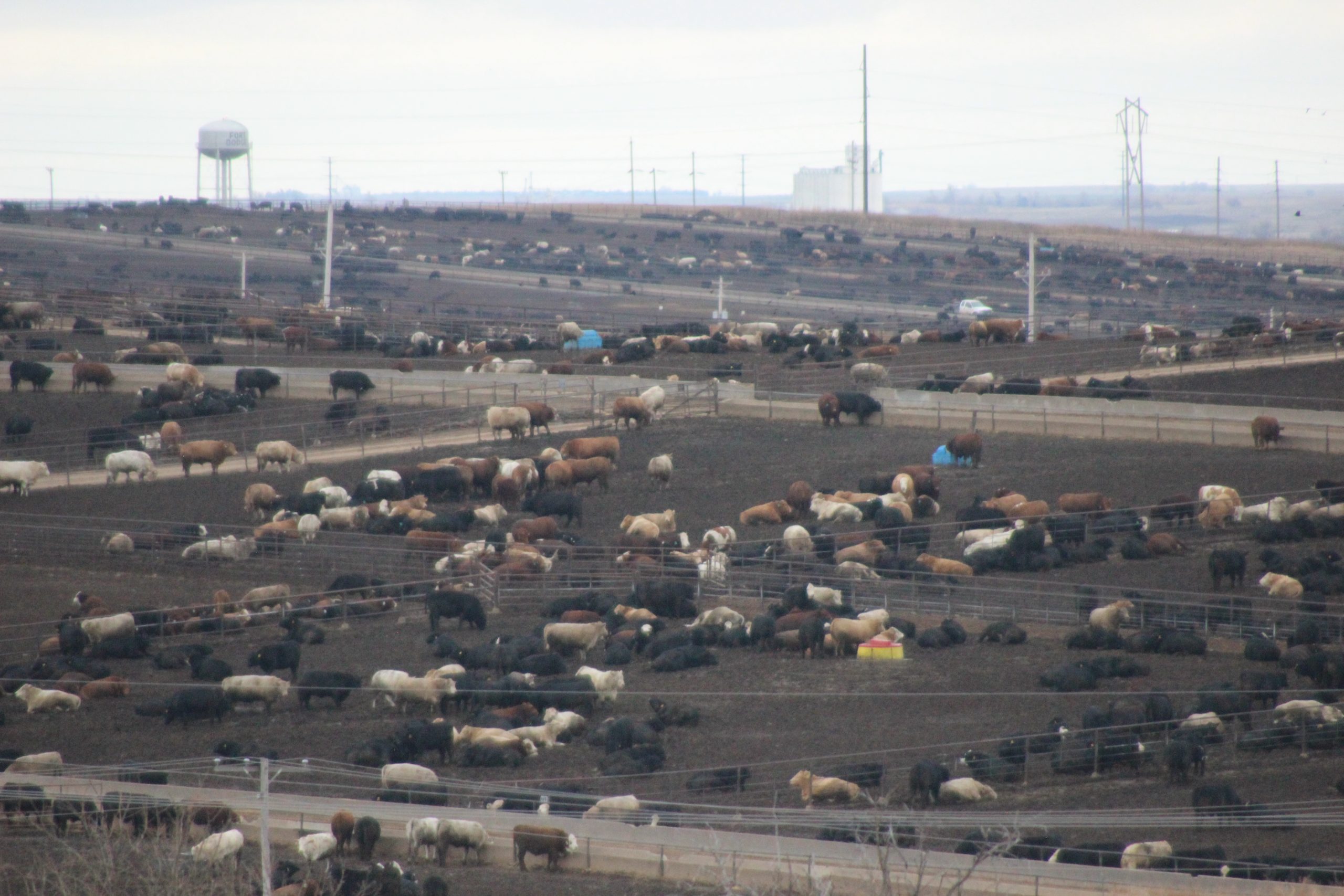The United States Cattle on Feed report showed an increase of 3% on Dec. 1, according to the U.S. Department of Agriculture’s National Agricultural Statistics Service.
The report from feedlots with a capacity of 1,000 or more head totaled 12.06 million head, compared to about 11.7 million head on Dec. 1, 2022. It was also up about 63,000 head above the Nov. 1, 2023, report.

Lance Zimmerman, a senior beef analyst with RaboResearch Food and Agribusiness team, said the report was largely in line with pre-report expectations. Placements were at the high end of most estimates while marketings were near the lower end of the range.
“Nothing came as a big surprise in this report,” Zimmerman said. “The key takeaway is the agency is reporting that feedyard inventories will remain ample through the winter.”
The on-feed number was above 12 million head for the first time since both 2019 and 2020 were above the benchmark, he said.
Dec. 1 usually marks the largest fed cattle inventory of the year, he said. In the past 10 years this monthly report has had the largest annual inventory six times. The second most frequent period to capture an annual high has been the Feb. 1 number (twice in the past 10 years), but that should not happen this year, he said.
“Five consecutive years of herd liquidation will be a drain on 2024 fed cattle supplies but recent Cattle on Feed reports suggest there will be ample supplies in the first half 2024,” Zimmerman said.
Texas, Nebraska, and Kansas continued to lead the numbers with 2.91 million, 2.58 million, and 2.5 million head, respectively, as of Dec. 1, 2023. The numbers were similar to a month ago but when compared to a year ago Texas and Kansas were both up from 2.81 million and 2.33 million head, respectively. Nebraska, on Dec. 1, 2022, showed 2.61 million head.
The biggest gains in placements over the last several months have been in the South and that is reflected in the Dec. 1 numbers, he said, adding Kansas supplies are up 167,000 head compared to last year and Texas is up 100,000. Those increases represent all but 43,000 head of the U.S. inventory gains compared to last year.
“At times, year-over-year comparisons can provide funny baselines, but generally Kansas and Texas, inventories were also up 80,000 and 70,000 head, respectively, compared to the recent five-year average as well,” Zimmerman said.
Nebraska is down 30,000 head compared to a year ago but against a five-year average is up 20,000 head, the analyst said. On a historical basis, all three states are steady to stronger compared to historical norms.
Placements in feedlots during November totaled 1.87 million head, which was 2% below 2022. Net placements were 1.81 million head. During November, placements of cattle and calves weighing less than 600 pounds were 535,000 head, 600 to 699 pounds were 440,000 head, 770 to 799 pounds were 380,000 head, 800 to 899 pounds were 288,000 head, 900 to 999 pounds were 140,000 head, and 1,000 pounds and greater were 85,000 head.
Other findings were marketings of fed cattle during November totaled 1.75 million head, which was 7% below 2022; and other disappearance totaled 54,000 head during November, which was 5% below 2022.
Marketing numbers
The report’s marketing numbers are softer and much of that is simply a reflection of a slower fed cattle slaughter pace, Zimmerman said. Even with the same number of slaughter days on the calendar compared to last year, steer and heifer slaughter was down 6.7% compared to last year. The market-ready fed cattle supply was adequate to support a larger slaughter than realized but the turnover rate in feedyards slowed as packers simply slowed processing speeds.
Packer margins have been a struggle for most of the year, Zimmerman said, and the November cutout average was around $10 per hundredweight cheaper than where it was during July and September when it made third quarter highs and 20 back from the June average when it made 2023 highs.
“Industry margins are going to be a focus in 2024,” Zimmerman said. “Cattle feeders experienced historically strong profitability in 2023 until fed cattle prices started to decline in the fourth quarter, and the live cattle futures market decline was more pronounced than the cash market break.”
Feedyard losses have quickly accelerated into year-end 2023 and the live cattle futures market isn’t pricing in a profit opportunity for hedgers in the new year, he said. Conversely, packer margins have been disappointing throughout most of the past year and while many are seeing positive returns in recent weeks, many processors will want to put 2023 to bed.
Looking ahead
There remains a tension that all cattle producers are having to wrestle with going into 2024, Zimmerman said. Important questions remain—how can the industry have a market-led herd rebuild with a cash-stressed consumer, limited processing returns and negative cattle feeding returns?
Sign up for HPJ Insights
Our weekly newsletter delivers the latest news straight to your inbox including breaking news, our exclusive columns and much more.
“Under the current market environment, the answer to that remains somewhat elusive,” he said. “Profitability is necessary across the beef industry sector to get that type of response, and it isn’t there today. That likely means that 2024 tracks more sideways to stronger from these recent lows, and the market behaves more rationally to get profitability back into the cattle producing segments once again.”
The live cattle futures market has recovered $7.50 to $8 per hundredweight since the Dec. 7 lows, but the promise of future returns evaded feedyards as the feeder cattle futures market rallied around a $16 mark. That increases the demands on feedyards and will require operators to be even more disciplined with procurement and operational costs going forward, he said.
Many people will be watching for the USDA’s cattle inventory report in late January, Zimmerman said. On Jan. 1, 2023, the report showed a 724,000 head (2.8%) decline in feeder cattle and calf supplies outside of feedyards. Yet, the year-to-date 2023 placement total is only down 225,000 head (1.1%), he observed.
The year-to-date placement weights are nearly identical to last year at this time too, only down 0.7 pounds over the last 11 months on average. The monthly feedyard report and the semi-annual industry inventory snapshot are simple surveys, and that data can present irregularities, Zimmerman said.
The government is also working through its 2022 Census of Agriculture data at the same time. Market participants will look to the USDA with anticipation for how it works through some of these report inconsistencies.
“There could be some revisions of prior report numbers in 2024 as the agency compares different sample responses,” Zimmerman said. “And any revisions could become more noteworthy than newly reported numbers as the market continues to look for more certainty from the supply side of the ledger.”
Dave Bergmeier can be reached at 620-227-1822 or [email protected].


